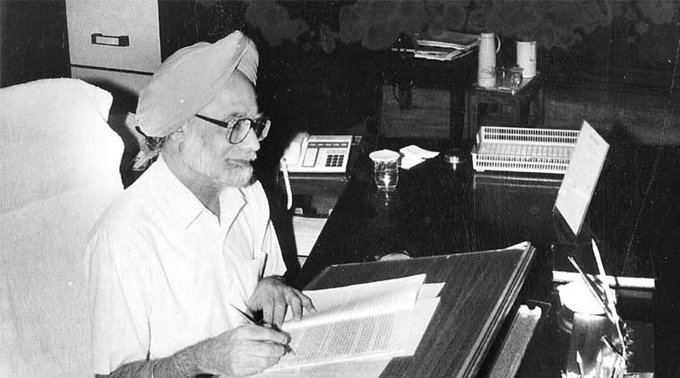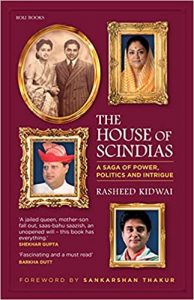
Madhavrao Scindia, not Manmohan, was Sonia's first choice as PM, but...
The former maharaja of the princely state of Gwalior, the charming, people-friendly politician Madhavrao Scindia could have easily become the Prime Minister of India in 2004, when the Congress-led coalition came to power at the Centre at that time and went on remain at the helm for the next ten years.However, this was not meant to be since his life was cruelly cut short on September 30, 2001, when he died in a plane air-crash and went down in the annals of Indian history as probably one of the best Prime Ministers India never had.

The former maharaja of the princely state of Gwalior, the charming, people-friendly politician, Madhavrao Scindia, could have easily become the Prime Minister of India in 2004, when the Congress-led coalition came to power at the Centre at that time and went on remain at the helm for the next ten years.
However, this was not meant to be since his life was cruelly cut short on September 30, 2001, when he died in a plane air-crash and went down in the annals of Indian history as probably one of the best Prime Ministers India never had.
K. Natwar Singh, 89, diplomat-turned-politician insists even today that Madhavrao Scindia would have been PM if he had lived. He would have been Sonia Gandhi’s first choice as prime minister of the United Progressive Alliance (UPA) government instead of Dr Manmohan Singh.
This was revealed in an excerpt published in News18 from Rasheed Kidwai’s book, ‘The House of Scindias: A Saga of Power, Politics and Intrigue’.
Also read: Statehood first, elections only then: J&K party leaders tell Centre
Though this claim remains in the “realm of conjecture”, the book excerpt goes on to state that there is no doubt that Madhavrao was much more popular as a leader than the “reticent” Manmohan Singh. He would win every Congress Working Committee election that he had fought by a huge margin. The Guardian wrote in an obituary that Madhavrao Scindia’s aristocratic lineage, personal charm, articulateness, youthful image and talent for the rough and tumble of democratic politics had shaped his mass appeal.
 “Sonia Gandhi may have had the charisma of leadership and the family name, but Scindia had the oratorical powers and was Congress’s second-biggest crowd-puller,” said the British daily.
“Sonia Gandhi may have had the charisma of leadership and the family name, but Scindia had the oratorical powers and was Congress’s second-biggest crowd-puller,” said the British daily.
Meanwhile, Rasheed Kidwai’s book goes on to argue the point about how Madhavrao Scindia would have been made PM because he also shared a “unique understanding” with Sonia Gandhi. He privately addressed her as Sonia, while she would often invite him for a cup of tea or coffee at rather short notice. They had known each other from the time of her arrival in India and her marriage to Rajiv Gandhi in 1968, said the excerpt.
Scindia reportedly was also aware that Sonia Gandhi was not keen on the ‘big chair’ of PM of India if such a situation would come to pass. And, he was able to gauge that she was in search of a person who could be trusted with the prime ministership, said Kidwai.
“And Madhavrao had the credentials to aspire for the job. Apart from his own comfort level with Sonia, he had also amassed a huge following among the great Indian middle classes through his previous stints as minister for railways, civil aviation and human resource development (HRD),” according to the excerpt published by News18.
Further and quite interestingly, the book excerpt goes on to talk about a Nehru-Gandhi family retainer, the “so-called Indira Gandhi loyalist” M L Fotedar’s narration of an unflattering incident involving Madhavrao.
Also read: Delimitation and what it means for the people of Jammu and Kashmir
According to him, a few days before her assassination on 31 October 1984, Indira Gandhi had told Rajiv Gandhi, (who was All India Congress Committee general secretary then) to be mindful of two things he should never do in the future. ‘Do not ever bring Teji’s son – Amitabh Bachchan – into electoral politics and do not induct Madhavrao Scindia in your cabinet if you ever become the prime minister.’
Rasheed Kidwai quotes this unsubstantiated story from Fotedar’s autobiography Chinar Leaves. However, Kidwai pointed out that Rajiv Gandhi obviously did not heed Indira’s advice and made Madhavrao a minister in his cabinet in 1984.
And as the minister of railways, Madhavrao became a “hero of sorts” among the burgeoning Indian middle classes by introducing fast and comfortable trains, such as the Shatabdi Express between Delhi and many state capitals.
Madhavrao was in the reckoning for the top job when Rajiv Gandhi was assassinated in Sriperumbudur on 21 May 1991. Many thought he was the right person to carry forward the young Rajiv’s vision and legacy. But the old guard in the Congress Working Committee and other decision-making bodies chose a “listless”, and the most “unlikeliest” of candidates, Narsimha Rao, who had already announced his decision to retire from politics.
However, Madhavrao was made civil aviation minister in Rao’s cabinet in 1991, a post he resigned when an aircraft, leased from Uzbekistan Airways during a domestic pilots’ strike, crash-landed. Subsequently, he was made HRD minister. Madhavrao also became very close to Sonia Gandhi at this time and was responsible for making her the life trustee of Indira Gandhi National Centre for the Arts (IGNCA), the country’s premier and wealthiest cultural institution, Kidwai wrote in his book.

